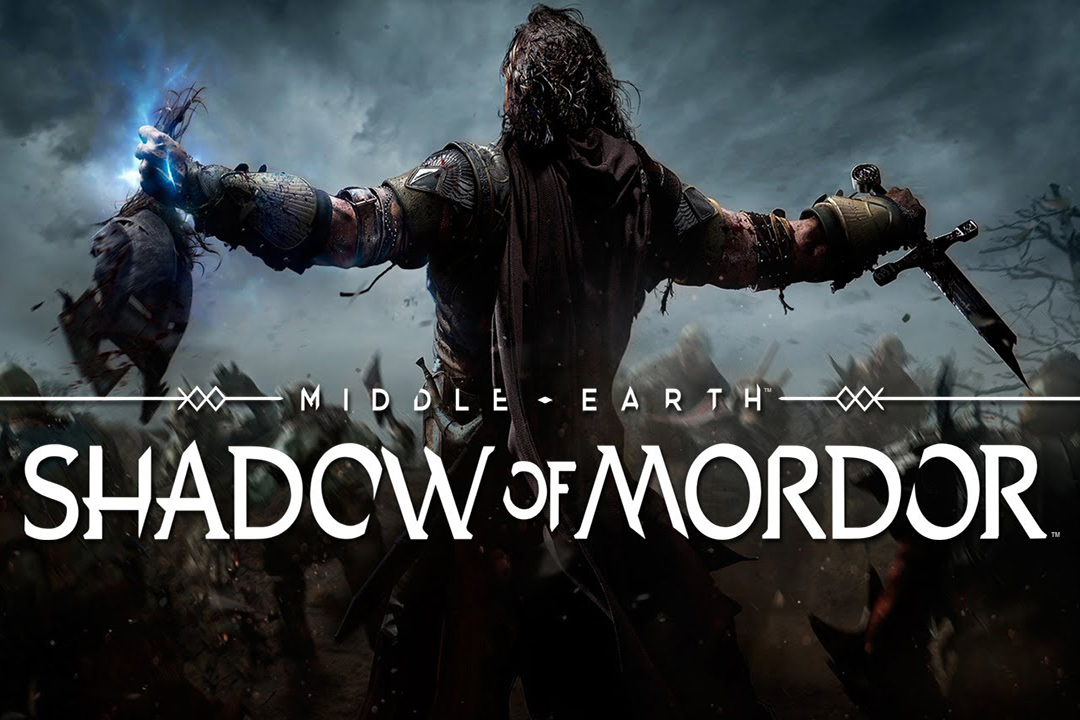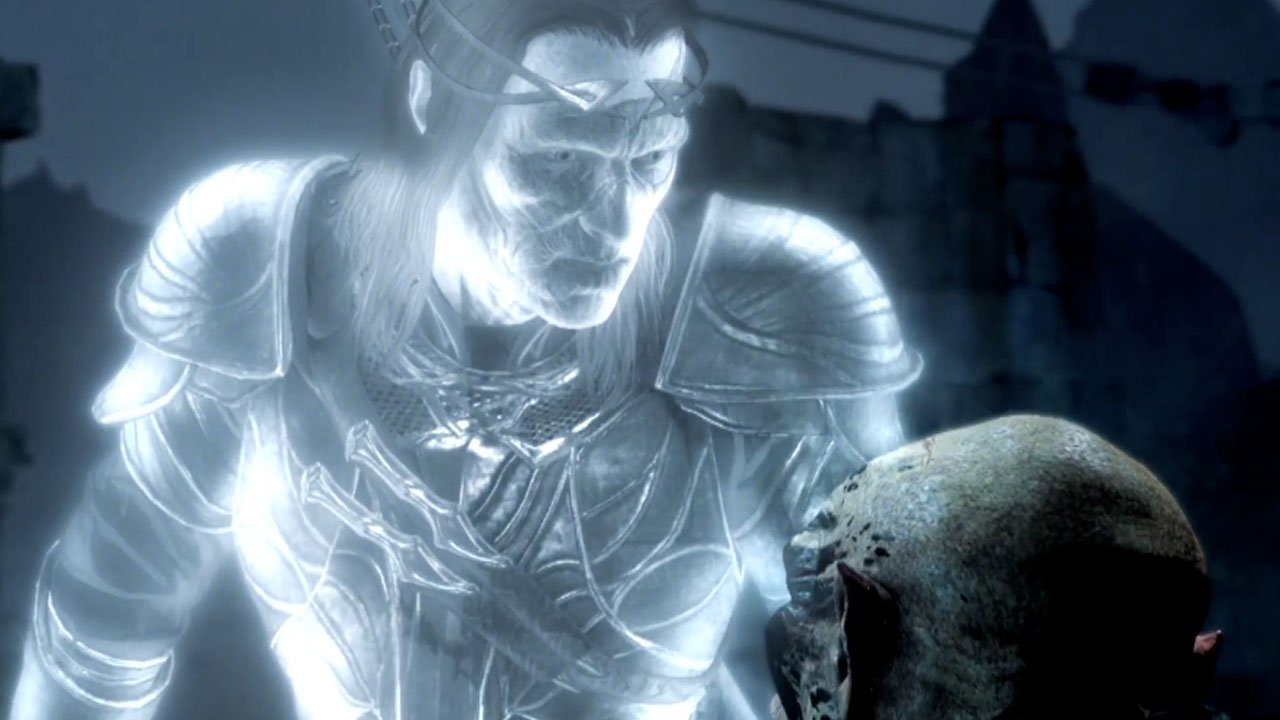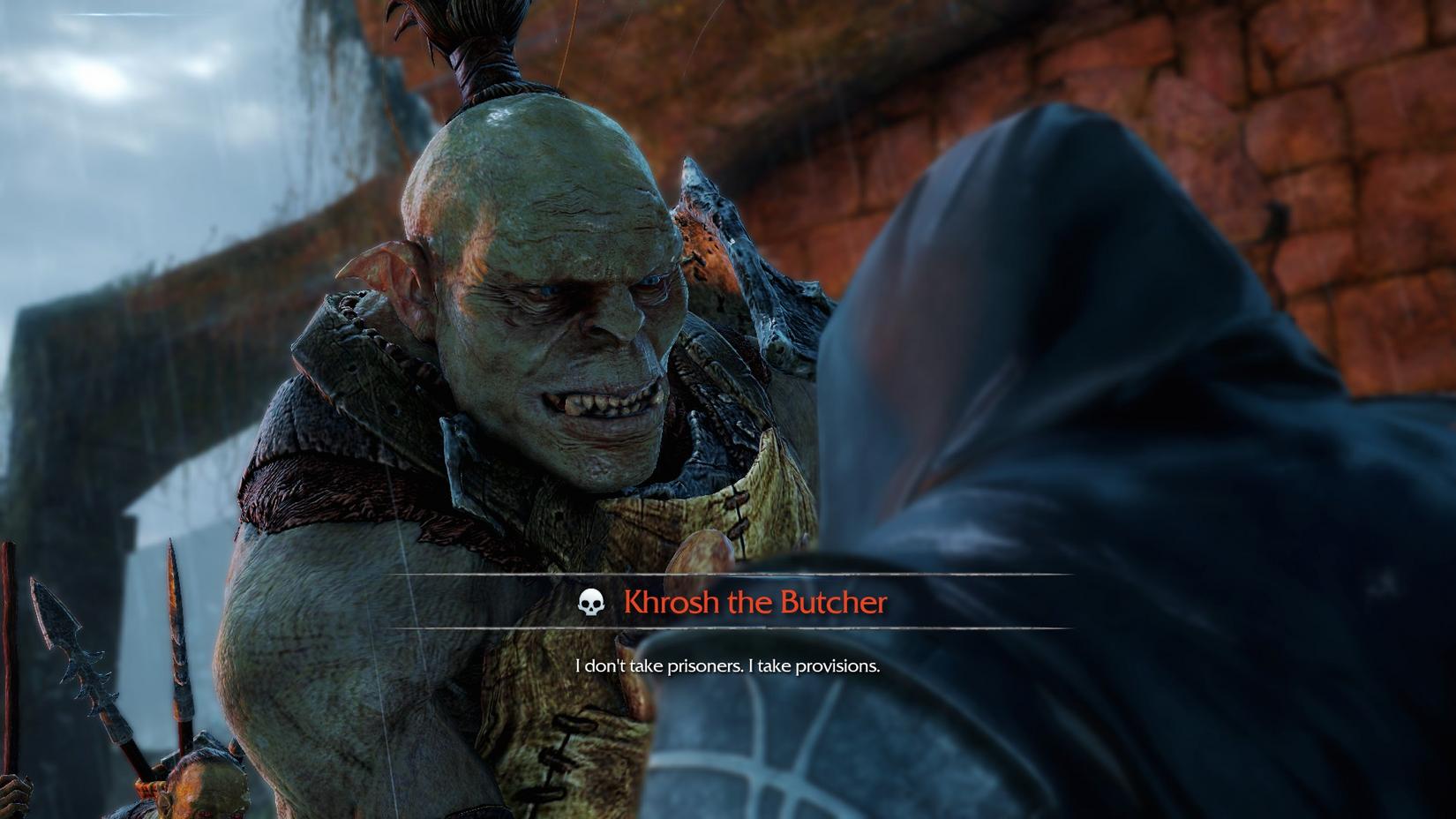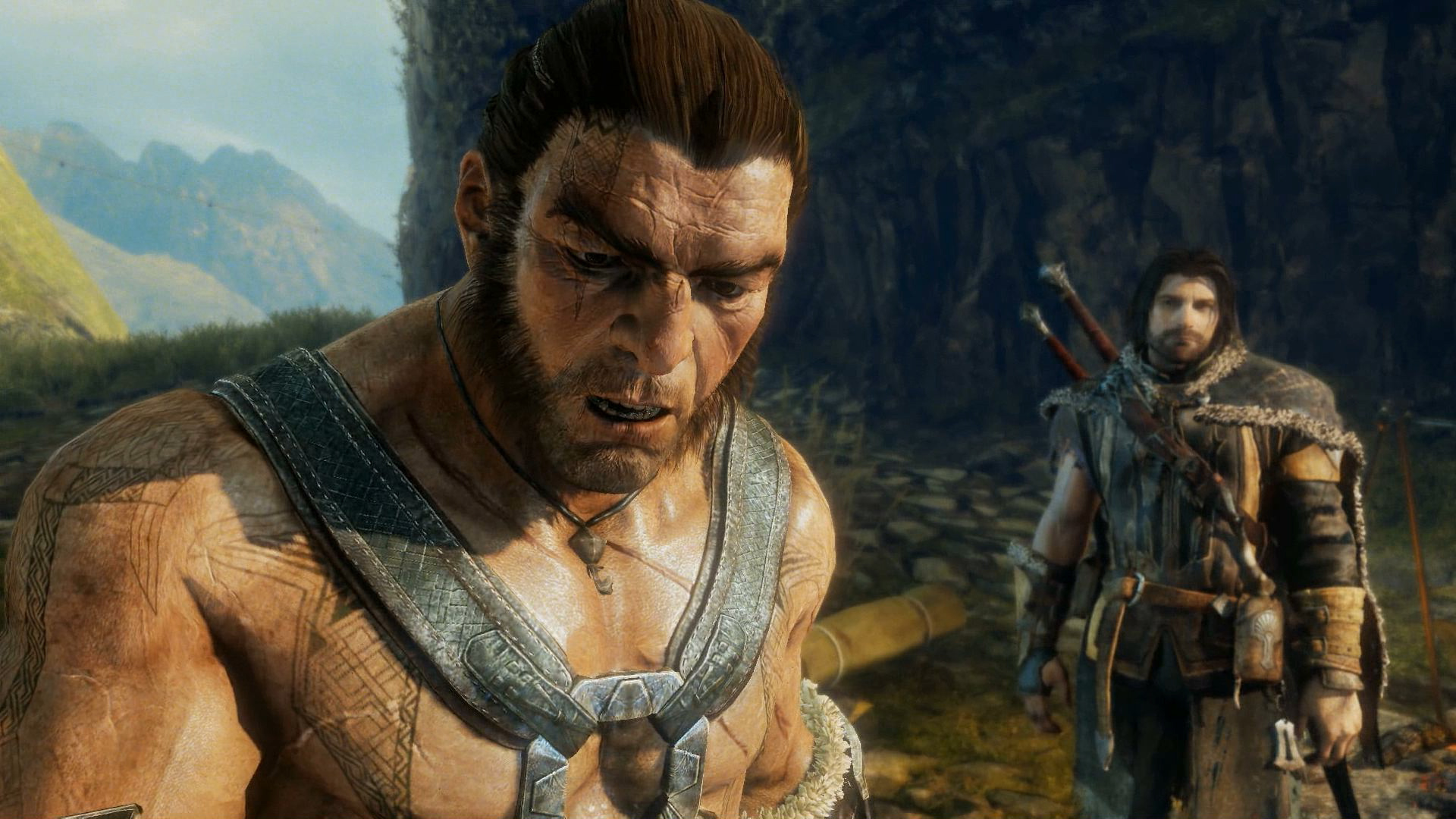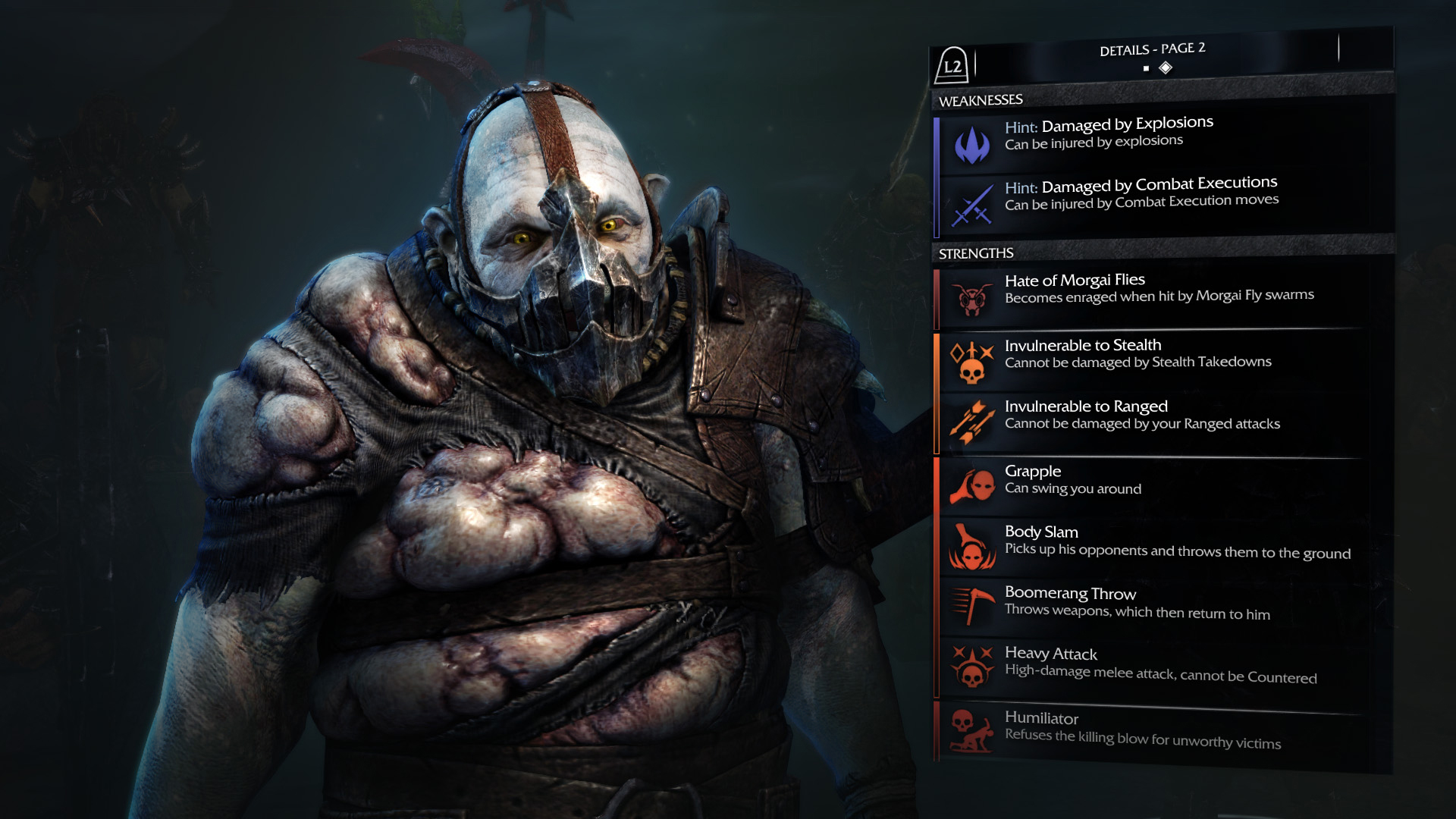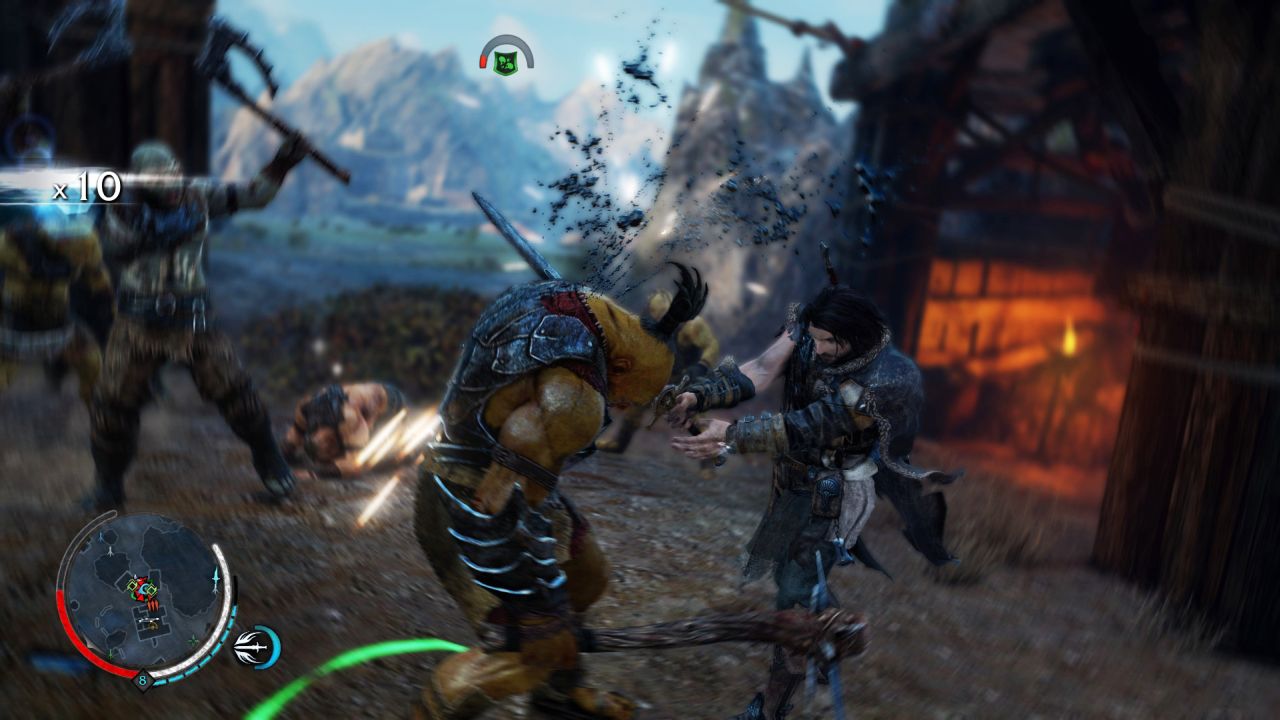Middle-earth: Shadow of Mordor – Review
Middle-earth: Shadow of Mordor is probably the best LOTR-themed game in recent years, possibly since the tie-in game for Lord of the Rings: The Two Towers. It steadily improves as a game through play, strongly conveying the growth in power of the player’s character Talion through play as well as story, and in a most welcome change, it exercises moderation in how it touches upon the lore that surrounds Middle-earth.
While one of the key draws for LOTR games is being able to explore the environments we’ve seen in films or read of in the books, the word judicious doesn’t come to mind when considering how references to the lore has been in previous games. It’s understandable for those based upon the films, but the overlap between movie and game was excessive in both LOTR: The Third Age and more recently with LOTR: War in the North. Memories of the former do not seem so offensive, though some of this is attributable to the use of footage, the actors from the films, or reasonable impersonators. War in the North pushes its original characters into the LOTR canon, but with actors taking on monumental roles that were beyond their ability, marring the delight one should feel sauntering around Rivendell.
Shadow of Mordor does play notes from the series, drawing on characters from LOTR, but does so with restraint. True, it is set in Mordor and must intertwine with some key characters from the canon, but it does not do so for the sake of making references, or trying to invoke a wink of “Hey, remember this character?” Those present have proper justification for being there, as it’s conceivable they would be tied to Mordor during this period somewhere between The Hobbit and The Lord of the Rings. While that’s true, an exception is present in the case of dialogue, with many lines mirroring ones elsewhere in LOTR, which does take you out of the moment.
Where the game steps right in terms of the lore then is in the characters we may not know already. The wraith that accompanies your character comes from The Silmarillion, though additional characters like Queen Marwen, Torvin and Ratbag do play notes that you may not recognise until after they’re undone. The characterisation of Talion feels as though he comes from Gondor, with the same sombre tones of melancholy we heard from Sean Bean’s lips, and the Wraith (I’m still not telling you who in case the name DOES mean something to you) has the weighty voice we associate with twisted powers.
The sounds in the environment are effective, but it’s the audio used in association with the Captains and Warchiefs that build momentum best. Both Captains and Warchiefs will taunt you, though the arrival of a War Chief will be accompanied by the orcish horde chanting their name. Considering the timing (of when the game is set), it should also be no surprise that Gollum is about, yet there’s balance to how much he’s part of the narrative. As with many open-world games, over time the ambient dialogue between Orcs, and the threats issues by Captain and their ilk will be repeated. Like yeah, you’re going to learn to ride a caragor too, Mr Orc? You and every other corpse I left behind.
One of the obvious benefits of telling a story in the Lord of the Rings setting is that the scene is already set, and the game need not do the heavy lifting itself. Those that aren’t familiar with the setting may find themselves lost, because Shadow does not attempt to retell the story, though it’ll tell a good deal about a ring, and a dark lord, and something about the end of the world. It can afford to do this in the same way sequels don’t need to establish a setting, though the position this story occupies is not directly in sequence with either LOTR or The Hobbit, but somewhere off to the side – and as such, Monolith Productions can afford to jump right in to the story they want to tell.
The overall story feels as though it is missing something, which is due to the character of Talion not quite delivering. I found myself more interested in the other characters (aside from the first of the Black Captains who was an evil incarnate that made even Sauron seem nuanced). The Wraith’s story was the standout, and thankfully the major focus of most missions, however even that has a number of gaps, with the events of his past told through flashbacks. The parts that concerned Talion, Hirgon and the outcasts lacked relatability, when as the most prominent humans, the opposite should have been true. Sombre Good treads too close to the “I may just cry forever” line to inflame the audience.
The game opens with a tutorial that presents the idyllic home life of Talion as our first run at the controls, but quickly blends it into a battle with orcs. This interspersed method of presenting what was the status quo for the ranger, and the next showing the incident that transformed him into the men he is today. Yes, men, in the plural. We’ll get there in a second. This introduction is effective, and given the context we have for Talion’s existence, it’s more understandable that these sequences are taken as the last gasp fever dream of a dead man. Well, not dead. Talion’s continued existence past death is owed to the Wraith mentioned previously, who co-inhabits the ranger’s body. Both died under similar circumstances, and both had been denied death, which is seemingly how the bond between them was formed.
It’s then that we’re cast into the land of shadow and flame. Mordor is split into two areas – the first is very much in line with what we see in the films, though it’s not quite as bleak. There were times I’d look at the sky and think wow, that’s actually quite pleasant, which isn’t at all consistent with what we’ve seen of Mordor, and the divergence increases once we’ve reached the second area. The lush tropical area by the Sea of Numen is undoubtedly popular with Uruks on vacation, though felt more reminiscent of the locales of Assassin’s Creed IV: Black Flag or Far Cry 3. It’s increasingly rare for games to make full use of a colour palette, however this would presumably be one where it was warranted. It still looks good, but sacrifices the tone established in the first area through it.
Beyond the environment, the characters look great. One of the scenes with Torvin in the second area stood out to me for how well the muscles moved. Animation of Talion, particularly in cutscenes, is of a similar quality, with the exasperation in his voice reflected by the look upon his face, particularly when dealing with Ratbag. Some of the orcs, as well as Gollum, do err a little on the side of plastic skin at times, and for the record, the game as played is reviewed on Xbox One – results may vary on other platforms. Effects are also presented well, and Wraith mode is entirely consistent with how that world has been shown in film.
As far as the gameplay goes, it centres mostly on third-person combat, with some stealth sequences and a small few chase scenes. It will invariably be the combat that occupies most gameplay, and it’s a satisfying experience, though at first it is difficult. Comparably combat plays similar to both the Arkham and Assassin’s Creed games, though begins at a slower pace. As with those games, it’s to your benefit to pick enemies off one-by-one in the early stages of the game, and sometimes you will need to run away. In those early stages, you may want to do that a lot. As you play, defeating Orcs, Uruk-Hai and eventually Enemy Captains, Talion will grow in strength, shifting from Brave Sir Robin to the Dark Knight.
Combat becomes easier at this point, and as you advance in tiers, new skills will increase your ability to the point where once two captains at once would have been beyond you, but you’ll eventually have no issue taking on many at once. Once flurries and combat finishers are available (indicated by the streak counter turning red), the game will become easier.
It is sluggish at first though, and outside of the old Death-From-Above style of assassination, killing a downed orc will be slow. The context controls are clunky at first, and with the case of ziplines, you’ll need to be in the sweet spot to be able to use them. The caragors continued to be problematic to deal with on the ground, but were fantastic once tamed (only from above to begin with) – the major issue with them is that where the counter system for sword combat was reliable, the dodging mechanic was hit-and-miss as to when it worked. Riding them was a good alternative to the fast-travel, as well as an effective tool against the few captains that had a fear of them.
While Talion is more or less immortal, death has consequences. If killed by a regular enemy, they may be promoted to a Captain. If they’re already a Captain, they will gain power, becoming stronger while you lick the wounds to your ego (since they’re the only one’s you’ll need to deal with) and presenting a more difficult challenge for the next round. You can mitigate against that by finding orcs with intel (who’ll show as green in wraith mode, or alongside an icon) and discover the strengths and weaknesses of those captains. It’s better to do this, instead of revealing yourself with a charged bow shot, only to find the target is invulnerable to ranged attacks.
This is part of the Captain system, which also models a best guess as Orc politics, complete with rivalries, feasts, and recruitment. You may also receive Nemesis quests, which gives you a chance to hunt down an Orc that’s killed somebody on your friend list.
In terms of stealth, it’s far more lenient than many games would be, with orcs taking their time to become alert, and then alarmed. It’s enough time to stealth-run in for a stealth kill, or even better, a brutalize kill that’ll send the surrounding orcs running like cowardly early-game Talions! Muaha-oh wait, that was me. If you get overwhelmed, it’s easy to run away, grab a health herb from the ground, and hide until you’ve recovered your stealthy status again. The wraith hangs around as a visual indicator of your last known location, so you won’t have to worry about being tracked down easily.
Most of the game mechanics are covered by the time you reach the second story mission, though it’s possible to have already engaged with everything before then, if you’ve taken to a bit of free-roaming. You can jump in, hunt a few orcs, and have it all saved. There are some quick-time events with the orcs and other monsters, but the first type represent an improvement to the process – moving the reticle inside a circle, and pressing the button once inside. There’s a button-mashing variety too, but thankfully they’re rare. Unfortunately they do reappear in the final story mission, so get your fingers twitching for that.
Once you reach the second area of the game, the game introduces the main other mechanic, which allows you to dominate orcs, overpowering their mind and for want of a better word, recruiting them to your side.
In addition to the main quests and the power struggles, there’s a small number of tower unlocks that enable fast travel, random minor quests throughout the landscape that can boost your arsenal, and a hunting/collecting quest series that feels similar to the Red Dead Redemption implementation of the same.
While it’s a thing of its own, it’s hard not to see the game as Assassin’s Creed: Mordor. That isn’t meant to be a negative, and while you may need to be a Tolkien fan to appreciate the story, it’s still better than the ones that have been coupled with that other franchise in recent releases. Perhaps it’s because it is able to build upon the LOTR setting that it exceeds, but it also takes the gameplay of those others and refines it. Whether or not it has longevity is unclear. It has no limit by way of content due to the dynamic power struggles and nemesis system, but it is not particularly engaging in the long-term.
It would be best played at a leisurely pace, as a rush to completion playthrough would draw attention to what is ultimately repetitive in its open-world content. The main missions do add some variance to gameplay, though the path to defeat or subvert each warchief across the two areas pushes the player into the best, yet most repetitive aspects of the game.
It is not a bad game – far from it – but is a refined take on a game-style that we’ve played before, in a world we’ve definitely seen before, doing things we’ve done before and will continue to until we tire of the game. Talion’s story is average, with all of the support characters far more interesting. The game does attempt to justify gameplay elements through the narrative, however there’s inconsistency between when many mechanics are introduced, and when they’re available to the player. It is an enjoyable game, but falls short of being special. If you’re a sucker for the Arkham or Assassin’s Creed games, you will probably have a fun time, but it’s the Tolkien fans that are served best by the game.




